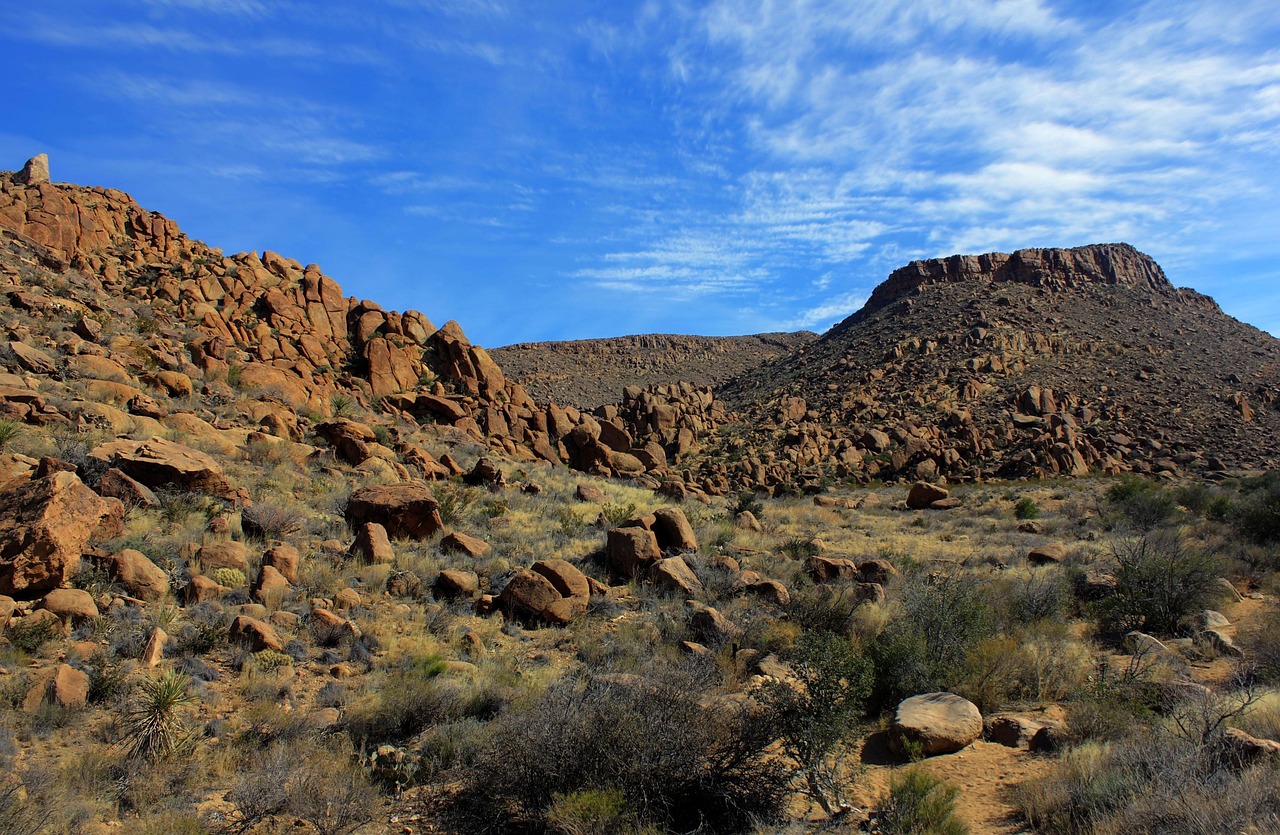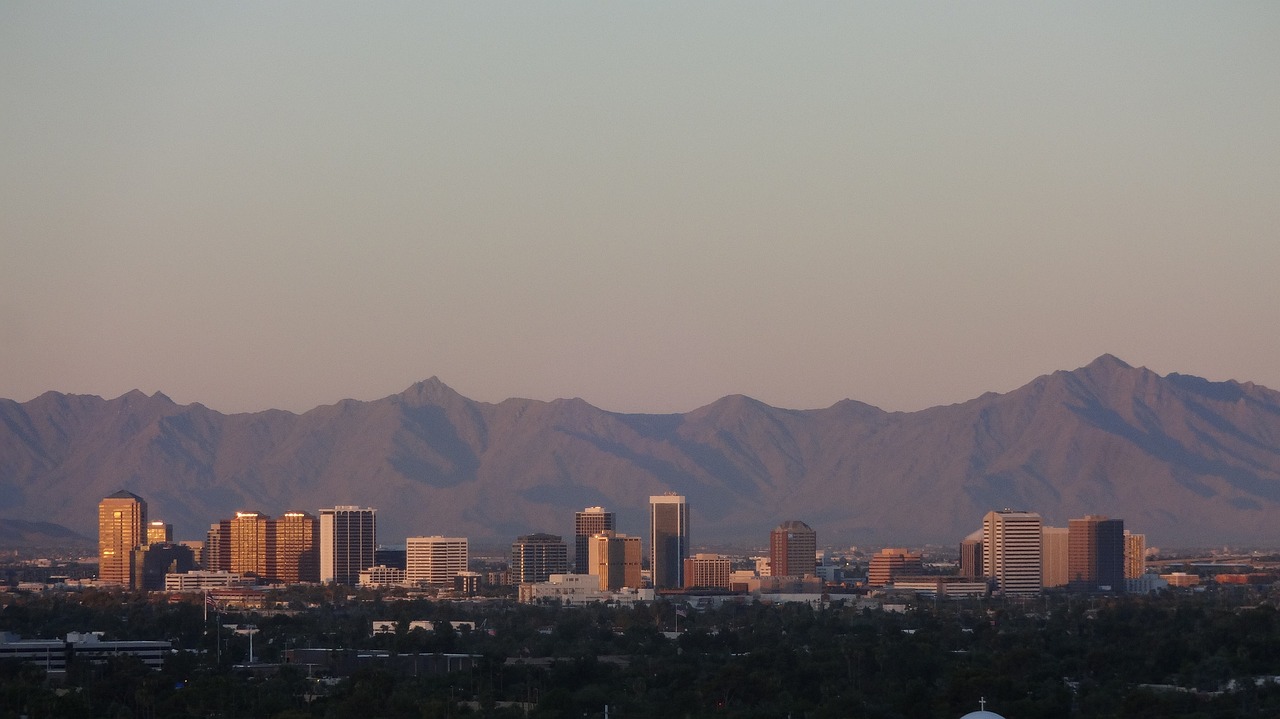Looking for a unique place to explore? Big Bend National Park is nestled in West Texas, offering vast wilderness and scenic beauty. This post will guide you through the park’s highlights, from its rugged landscapes to diverse wildlife.
Get ready for an adventure!
Key Takeaways
- Big Bend National Park sits in West Texas and has over 800,000 acres. It includes mountains, desert, and the Rio Grande.
- The park has diverse plants and animals from the Chihuahuan Desert. Over 450 bird species live here.
- Visitors can see limestone canyons like Santa Elena Canyon. They can also explore fossils from millions of years ago.
- There are many activities like hiking, camping, river rafting, kayaking, and stargazing.
- Big Bend is important for research on ecosystems. It offers visitor programs to learn about conservation.
Geography and Climate
Big Bend National Park, located in West Texas near the border with Mexico, covers a vast area of unique desert and river environments. The park’s landscape is characterized by its striking limestone canyons and diverse ecosystems shaped by the hot and arid climate of the Chihuahuan Desert region.
Location and size
Big Bend National Park sits in West Texas, near the Mexico border. It covers over 800,000 acres, making it a massive space for adventure. The park includes a big part of the Chihuahuan Desert and a long stretch of the Rio Grande.
This place is huge! You can find mountains, rivers, and desert lands all in one park. Plus, it’s right next to Mexico which adds to its charm. Travelers love exploring its vastness and seeing different landscapes.
Unique desert and river environments
The Chihuahuan Desert covers a big part of Big Bend National Park. It’s full of life, with many plants and animals calling it home. Cacti, yucca plants, and more than 1,200 plant species grow here.
The Rio Grande flows along the park’s southern edge. This river makes a natural border between the United States and Mexico.
In this desert, rivers shape the land. They carve deep canyons like Santa Elena Canyon. Visitors see tall cliffs rising straight from the water’s edge. Adventure seekers explore these areas by rafting or kayaking on the Rio Grande.
Next up is “Geology of Big Bend.
Geology of Big Bend
Big Bend’s geology is a marvel, featuring limestone canyons carved by the Rio Grande. Fossils and remnants of ancient life add to the depth of its geological history.
Limestone canyons
Limestone canyons in Big Bend National Park are a sight to see. They formed millions of years ago when this area was under the sea. Over time, the sea went away, leaving behind thick layers of limestone.
The Rio Grande River has carved deep into these layers, creating stunning canyons like Santa Elena Canyon. This canyon has walls that soar up to 1,500 feet high and is one of the park’s most famous features.
Next comes exploring the fossils and paleontology found in the park.
Fossils and paleontology
The limestone canyons of Big Bend National Park aren’t just breathtaking landscapes; they hold secrets from millions of years ago. The park is home to diverse and well-preserved fossils, especially from the Cretaceous period, around 65 million years ago.
Visitors can explore the Fossil Discovery Exhibit to see ancient sea creatures’ remnants embedded in rocks, offering a glimpse into the region’s prehistoric marine life. The paleontology program allows enthusiasts to join guided tours and learn about fossil identification and preservation techniques directly from experts.
Understanding Big Bend’s fossils provides valuable insights into the Earth’s history, helping scientists piece together the story of ancient ecosystems and environmental changes. It also highlights the importance of conservation efforts to protect these remarkable geological treasures for future generations to appreciate and study further.
Whether you’re an amateur fossil enthusiast or simply intrigued by ancient history, exploring Big Bend’s paleontological wonders offers a unique opportunity to connect with life forms that lived long before our time.
Flora and Fauna
Big Bend National Park is home to diverse native plants of the Chihuahuan Desert. The park also boasts a rich wildlife diversity and unique ecosystems, making it an ideal destination for nature enthusiasts.
Native plants of the Chihuahuan Desert
The Chihuahuan Desert in Big Bend National Park is home to a variety of native plants. You can find Creosote bush, lechuguilla, sotol, and various cacti like prickly pear and barrel cactus.
These plants have adapted to the desert’s arid conditions and play a crucial role in supporting the diverse wildlife found in the park.
These native plants not only add to the stunning landscape but also provide food and shelter for many animals. The Chihuahuan Desert’s unique flora contributes to its ecological richness, making it an essential part of the park’s vibrant ecosystem.
Wildlife diversity and ecosystems
Big Bend National Park is home to a diverse range of wildlife and ecosystems, thanks to its varied landscape. The Chihuahuan Desert hosts unique plants like ocotillo and lechuguilla, which are adapted to the arid climate.
The park’s rich biodiversity includes over 450 bird species, including roadrunners and painted buntings. Visitors can also spot mammals such as mule deer, javelinas, and mountain lions in this rugged terrain.
The Rio Grande river creates a vital oasis for both flora and fauna in the desert environment. Its riparian zones sustain cottonwood trees and provide shelter for creatures like beavers and ringtail cats.
Additionally, the Chisos Mountains offer a completely different habitat with its cooler temperatures, providing refuge for black bears among other species. This wide array of habitats within the park contributes to Big Bend’s reputation as an ecological hotspot with abundant opportunities for wildlife observation.
Popular Attractions
Explore the majestic Chisos Mountains, home to fantastic hiking trails and breathtaking panoramic views. Experience the awe-inspiring beauty of Santa Elena Canyon along the Rio Grande with its towering limestone walls and peaceful river running through it.
Chisos Mountains
The Chisos Mountains are the heart of Big Bend National Park, standing tall at an elevation of nearly 8,000 feet. This mountain range is a hiker’s paradise with its diverse trails offering breathtaking views of the surrounding desert landscapes and Rio Grande.
The most popular hike leads to Emory Peak, the highest point in the Chisos Mountains and provides panoramic vistas.
The Chisos Mountains also offer a cool retreat from the desert heat with diverse flora and fauna, including Mexican jays and other bird species. Visitors can explore its unique ecosystems while hiking through juniper forests and stands of pine trees.
These mountains are not only a natural wonder but also hold cultural significance as they have been home to people for thousands of years. Providing ample opportunities for exploration and adventure, this magnificent mountain range is a must-see when visiting Big Bend National Park.
Santa Elena Canyon
Moving from the stunning Chisos Mountains, another must-see in Big Bend National Park is the illustrious Santa Elena Canyon. Carved by the forceful Rio Grande, this majestic canyon rises to 1,500 feet and stretches over a mile long.
The sheer limestone cliffs make for an awe-inspiring sight as you gaze up at their towering heights. To truly experience this natural wonder, venture down the Santa Elena Canyon Trail which leads you along the edge of the river giving you a closer look at this marvel.
The grandeur of Santa Elena Canyon is further accentuated by its serenity. As you stand within this geological masterpiece, take a moment to soak in its tranquility and appreciate its timeless beauty.
Whether it’s admiring its colossal walls or embarking on a thrilling rafting adventure through its embrace, Santa Elena Canyon offers an unforgettable experience that encapsulates the unparalleled allure of Big Bend National Park.
Ross Maxwell Scenic Drive
Ross Maxwell Scenic Drive is a 30-mile paved road showcasing Big Bend National Park’s diverse landscapes. It runs through the Chihuahuan Desert, flanked by the rugged Chisos Mountains and vast canyons.
Along this drive, visitors encounter stunning vistas and prime wildlife viewing opportunities such as desert plants, colorful birds, and maybe even native mammals like javelinas or coyotes.
The route also offers access to iconic landmarks such as Santa Elena Canyon and Sotol Vista. At Santa Elena Canyon, take in the towering canyon walls carved by the Rio Grande River—truly an awe-inspiring sight.
The drive is a must for those seeking a scenic overview of Big Bend’s unique terrain without strenuous activity. Keep an eye out for interesting geological formations throughout the journey including volcanic dikes that cut across ancient limestone deposits, adding another layer of intrigue to this captivating drive within Texas’ most magnificent national park.
Activities for Visitors
Explore the breathtaking hiking trails that wind through unique desert landscapes. Experience the thrill of river rafting and kayaking on the Rio Grande, surrounded by stunning canyon walls.
Hiking and camping
Big Bend National Park offers a variety of hiking and camping opportunities perfect for nature enthusiasts. Here’s what you can enjoy:
- Explore over 150 miles of hiking trails, ranging from easy strolls to challenging treks through diverse landscapes.
- Discover primitive campsites along the Rio Grande and designated campgrounds offering breathtaking views of starry night skies.
- Engage in bird watching and photography as you traverse through the park’s unique ecosystems.
- Immerse yourself in the tranquil surroundings at designated backcountry campsites, providing an authentic wilderness experience.
- Experience the thrill of river running and fishing along the Rio Grande, with permits available for overnight trips.
These activities offer a chance to connect with nature and create unforgettable memories during your visit to Big Bend National Park.
River rafting and kayaking
The park’s Rio Grande offers thrilling experiences for water enthusiasts. You can immerse yourself in the beauty of Big Bend National Park while enjoying the following activities:
- Rafting: The Rio Grande features a variety of rapids suitable for both beginners and experienced rafters. The remote, rugged landscape provides a unique backdrop for an unforgettable river adventure.
- Kayaking: Explore the calm waters of the Rio Grande by kayaking through stunning canyons and past towering cliffs. This intimate experience allows you to truly appreciate the natural wonders surrounding you.
- Guided tours: Join organized tours led by expert guides who provide insight into the region’s history, geology, and wildlife as you navigate the river’s twists and turns.
- Wildlife viewing: Keep an eye out for diverse wildlife along the riverbanks, including numerous bird species and other desert animals that call this area home.
- Scenic views: Marvel at breathtaking vistas as you float down the Rio Grande, with picturesque landscapes unfolding around every bend.
- Safety precautions: Be sure to check water levels and weather conditions before embarking on your river excursion to ensure a safe and enjoyable journey in this beautiful natural setting.
Stargazing in the dark-sky park
Big Bend National Park is a prime spot for stargazing. The park’s remote location and minimal light pollution make it an ideal place to observe the night sky. Visitors can witness a dazzling array of stars, planets, and celestial phenomena.
The park offers special stargazing events and programs led by knowledgeable rangers who share insights about the constellations and astronomical wonders visible in the park’s dark skies.
With clear nights for approximately 235 days a year, visitors are treated to an exceptional stargazing experience.
At Big Bend National Park, visitors can see up to 2,000 stars on any given night, far more than what’s visible in urban areas. During moonless nights from September through April, the Milky Way illuminates its full glory across the desert sky.
This remarkable visibility makes Big Bend one of the best places for stargazers to witness meteor showers or even catch a glimpse of distant galaxies using telescopes at certain areas within the park dedicated specifically for this purpose.
Educational and Scientific Importance
Big Bend National Park holds significance for research and conservation efforts, promoting visitor education programs. Discover more about the park’s educational and scientific impact that goes beyond its stunning landscapes.
Research and conservation efforts
Scientists and conservationists at Big Bend National Park conduct crucial research to protect the diverse ecosystems. They monitor wildlife populations, study plant species, and assess the impact of human activity on the environment.
Their work is essential for maintaining a healthy balance within the park’s delicate desert and river habitats. With ongoing efforts to understand these ecosystems, they can better preserve them for future generations.
Conservation initiatives are implemented to safeguard the unique geology and biodiversity of Big Bend National Park. Through habitat restoration projects, invasive species management, and educational programs, conservationists aim to ensure that this natural treasure remains unspoiled.
The collaboration between researchers and park authorities plays a vital role in maintaining the ecological integrity of this spectacular landscape for years to come.
Visitor education programs
The visitor education programs at Big Bend National Park provide a chance to learn about the park’s unique environment and wildlife. The Fossil Discovery Exhibit showcases the area’s ancient past, featuring fossils dating back millions of years.
The park also offers ranger-led programs covering topics like desert ecology and stargazing, providing insights into the intricate ecosystems and dark-sky preservation efforts.
These educational initiatives aim to increase awareness about conservation and preservation while offering engaging experiences for visitors. Through interactive displays and guided activities, visitors gain a deeper understanding of the natural wonders within the park, enriching their overall exploration.
Don’t miss these opportunities to delve into the scientific importance of this remarkable national treasure.
Planning Your Visit
Plan your visit by starting at the visitor center for park information, maps, and permits. Learn about safety guidelines and best spots to explore – then get ready for an adventure in one of Texas’ most breathtaking landscapes.
If you’re keen on experiencing a natural wonderland from desert to mountains, there’s so much here waiting just for you.
Visitor center and park facilities
Big Bend National Park provides a visitor center for travelers, offering information on the park’s attractions, safety tips, and guided tours. The Panther Junction Visitor Center is the primary one, located in the Chisos Basin.
There are also smaller centers at Castolon and Persimmon Gap. The park facilities include campgrounds, RV sites, picnic areas, and restrooms. For those interested in overnight stays or extended exploration of the park’s beauty there are lodges available with accommodations ranging from rustic cabins to hotel-style rooms.
Visitors can acquire necessary supplies at stores within Big Bend National Park. These stores offer camping gear, groceries, and gifts for all age groups. In addition to these conveniences when visitors arrive at the hot desert climate they also have access to water stations located throughout the park.
Tips for a safe and enjoyable trip
Before embarking on your adventure, be sure to take note of these essential tips for a safe and enjoyable trip:
- Always carry sufficient water and stay well-hydrated, especially when engaging in outdoor activities in the desert environment.
- Be aware of your surroundings and watch out for local wildlife such as rattlesnakes and scorpions while exploring the park’s trails and canyons.
- Check weather conditions beforehand and prepare for extreme temperature variations, especially during summer months.
- Practice Leave No Trace principles by disposing of waste properly and respecting the park’s natural resources.
- Stay on designated trails to protect yourself from potential hazards and to preserve the delicate ecosystem of Big Bend National Park.
- Plan ahead for camping or lodging reservations, as accommodations can fill up quickly during peak seasons.
- Familiarize yourself with park regulations and safety guidelines to ensure a smooth and rewarding experience during your visit.
These practical considerations will help you make the most of your time at Big Bend National Park while prioritizing safety and environmental conservation.
Conclusion
Discover the majestic beauty of Big Bend National Park in West Texas. Explore its unique desert and river landscapes, brimming with geological wonders, diverse flora, and abundant wildlife.
Engage in a range of outdoor activities while basking in the educational and scientific significance of this captivating national park. Start planning your visit to experience all that Big Bend has to offer for an unforgettable adventure amidst nature’s splendor.
FAQs
1. What is Big Bend National Park?
Big Bend National Park is a stunning area in Texas, known for its beautiful landscapes, diverse wildlife, and rich history. It features mountains, deserts, and rivers that attract many visitors each year.
2. What activities can I do at Big Bend National Park?
You can hike on various trails, go camping under the stars, or explore the scenic drives. Birdwatching and stargazing are popular too since the park has dark skies perfect for seeing stars.
3. When is the best time to visit Big Bend National Park?
The best times to visit are in spring and fall when temperatures are milder. Summers can be very hot while winters might be chilly at night but still pleasant during the day.
4. How should I prepare for my trip to Big Bend National Park?
Make sure to bring plenty of water, snacks, sunscreen, and good hiking shoes. Also check weather conditions before you go so you know what to expect during your adventure!







Leave a Reply